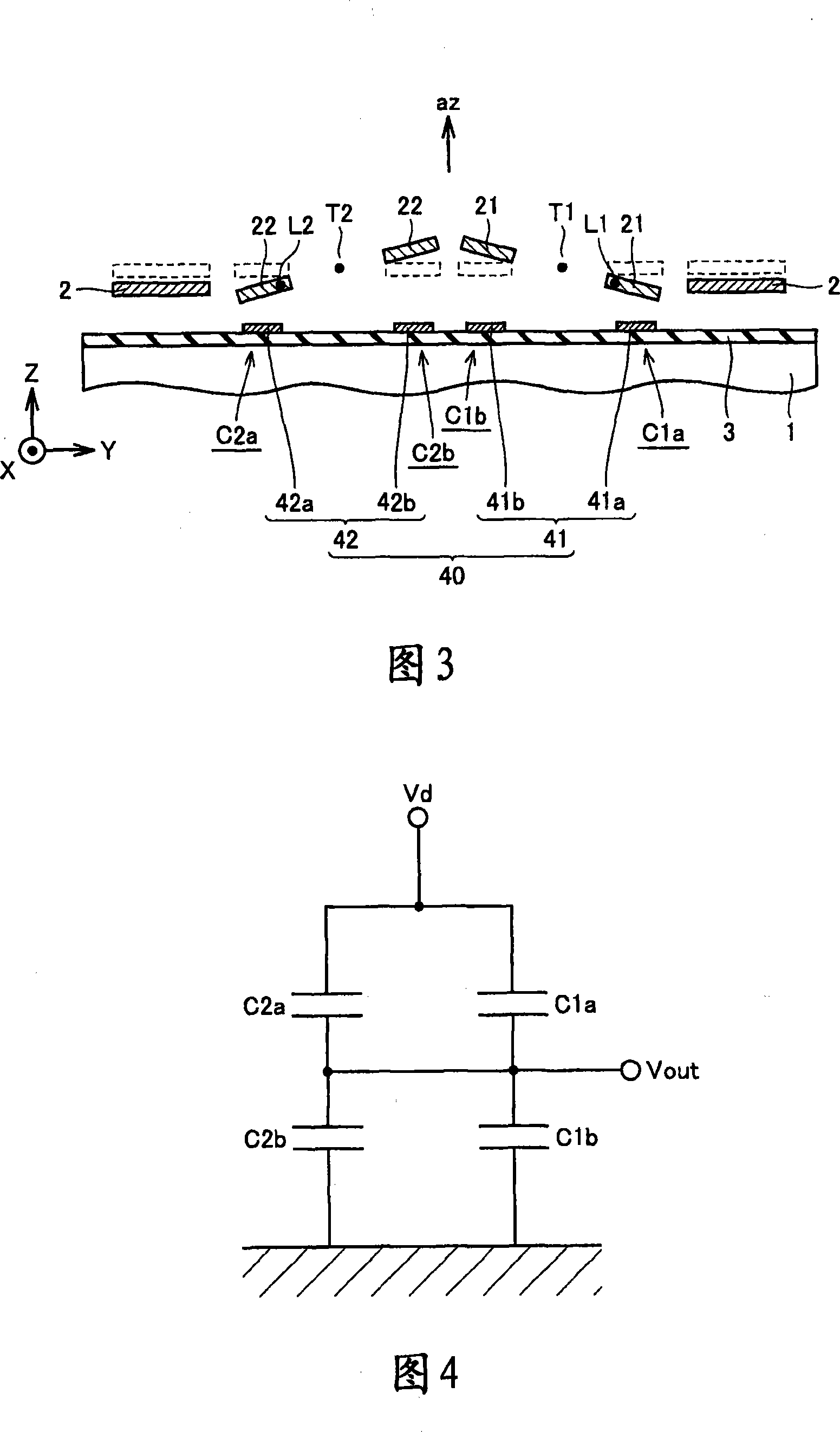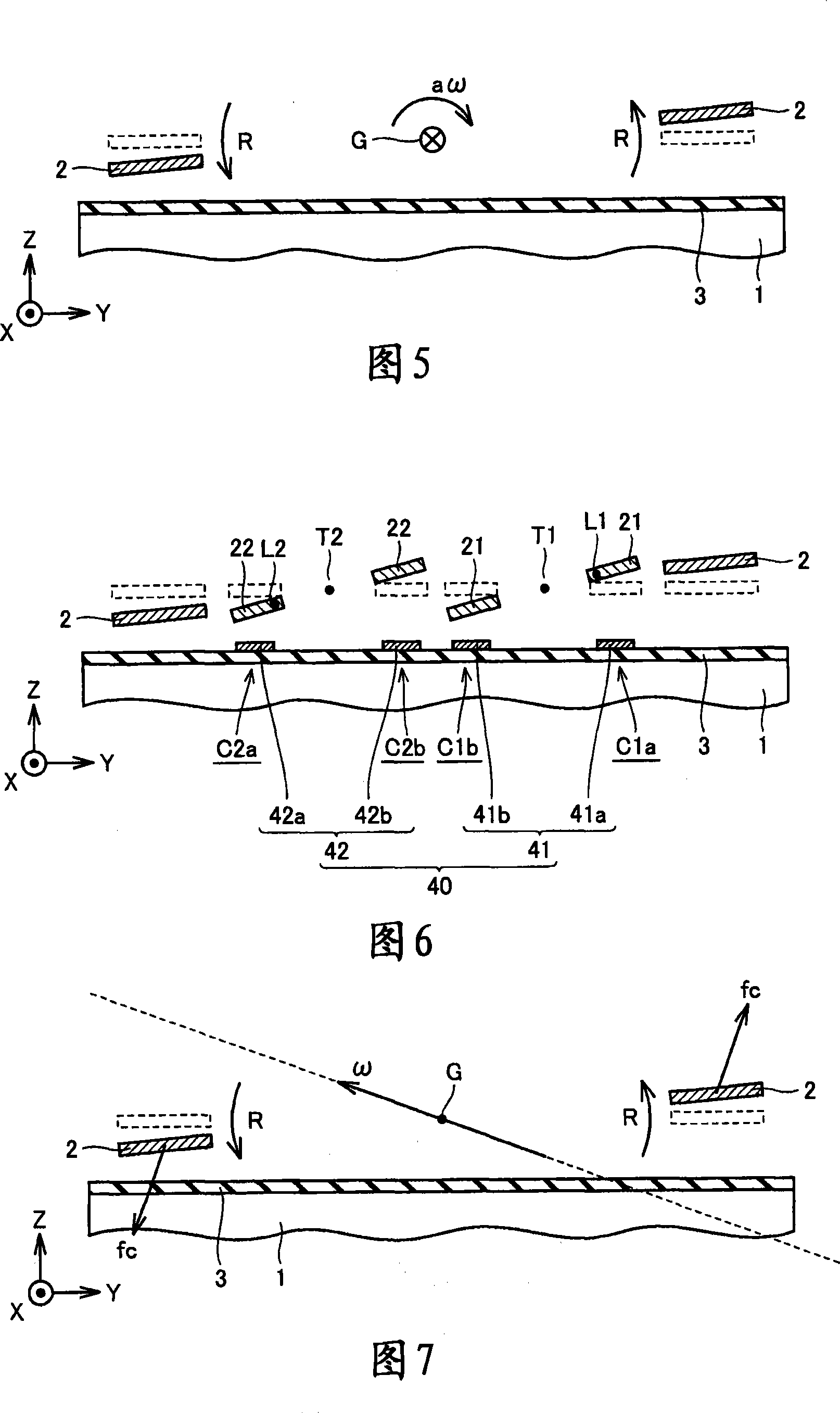Acceleration sensor
An acceleration sensor and angle technology, which is applied in the directions of measuring acceleration, multi-dimensional acceleration measurement, speed/acceleration/impact measurement, etc., can solve the problems of inability to distinguish detection frames and large acceleration detection errors, etc.
- Summary
- Abstract
- Description
- Claims
- Application Information
AI Technical Summary
Problems solved by technology
Method used
Image
Examples
Embodiment approach 1
[0046] First, the main configuration of the acceleration sensor of this embodiment will be described.
[0047] Referring to FIG. 1 and FIG. 2 , for the convenience of description, the coordinate axes X-axis, Y-axis and Z-axis are introduced. In Figure 1, the X-axis is the positive axis along the right direction along the horizontal direction, the Y-axis is the positive axis along the vertical upper direction, and the Z-axis is the positive direction perpendicular to the upper side of the paper. axis. In addition, the direction of the Z-axis coincides with the acceleration direction that is the measurement target of the acceleration sensor of this embodiment.
[0048] The acceleration sensor of this embodiment mainly includes a substrate 1, first and second torsion beams 11, 12, first and second detection frames 21, 22, a plurality of detection electrodes 40, first and second connecting beams 31, 32, And the inertial mass body 2.
[0049] As the substrate 1, a silicon substr...
Embodiment approach 2
[0106] Referring to FIGS. 14 and 15 , in the acceleration sensor of the present embodiment, excitation electrodes 5 are formed on substrate 1 so as to face inertial mass 2 .
[0107] Other than that, the configuration of the present embodiment is the same as that of the above-mentioned first embodiment, so the same elements are denoted by the same reference numerals, and description thereof will be omitted.
[0108] According to the present embodiment, by applying a voltage between the excitation electrode 5 and the inertial mass 2 , as shown by the arrow in FIG. 15 , an electrostatic force that attracts the inertial mass 2 toward the substrate 1 can be generated. That is, the inertial mass 2 can be electrostatically driven in the thickness direction of the substrate 1 . This electrostatic drive can generate the same displacement as that of the inertial mass 2 when the acceleration az in the thickness direction of the substrate 1 is applied to the acceleration sensor. Therefo...
Embodiment approach 3
[0110] Referring to FIG. 16 , the acceleration sensor of this embodiment has anchor points 90 and support beams 4 provided on a substrate 1 .
[0111] One end of the support beam 4 is supported on the base plate 1 through the anchor point 90 . The other end of the support beam 4 supports the inertial mass 2 .
[0112] The support beam 4 has a 1st support beam 4X and a 2nd support beam 4Y. The first support beam 4X has a shape that can be easily elastically deformed in the Z-axis direction, and hardly elastically deformed in the X-axis direction. The second support beam 4Y has a shape that can be easily elastically deformed in the Z-axis direction, and hardly elastically deformed in the Y-axis direction. Therefore, as a whole, the support beam 4 is configured to be easily elastically deformed in the Z-axis direction and difficult to be elastically deformed in the XY in-plane direction.
[0113] Other than that, the configuration of this embodiment is the same as that of Embo...
PUM
 Login to view more
Login to view more Abstract
Description
Claims
Application Information
 Login to view more
Login to view more - R&D Engineer
- R&D Manager
- IP Professional
- Industry Leading Data Capabilities
- Powerful AI technology
- Patent DNA Extraction
Browse by: Latest US Patents, China's latest patents, Technical Efficacy Thesaurus, Application Domain, Technology Topic.
© 2024 PatSnap. All rights reserved.Legal|Privacy policy|Modern Slavery Act Transparency Statement|Sitemap



